We have been widely documenting the difficulties encountered by WeChat in its expansion outside China.
But there’s one company which is doing pretty well outside China: Alibaba. What’s the secret of Jack Ma’s company to make a killing outside its home market?
How Alibaba is killing it outside China
Alibaba is growing fast in China. But outside China, it’s growing at insane rates: no less than 288% growth year on year!
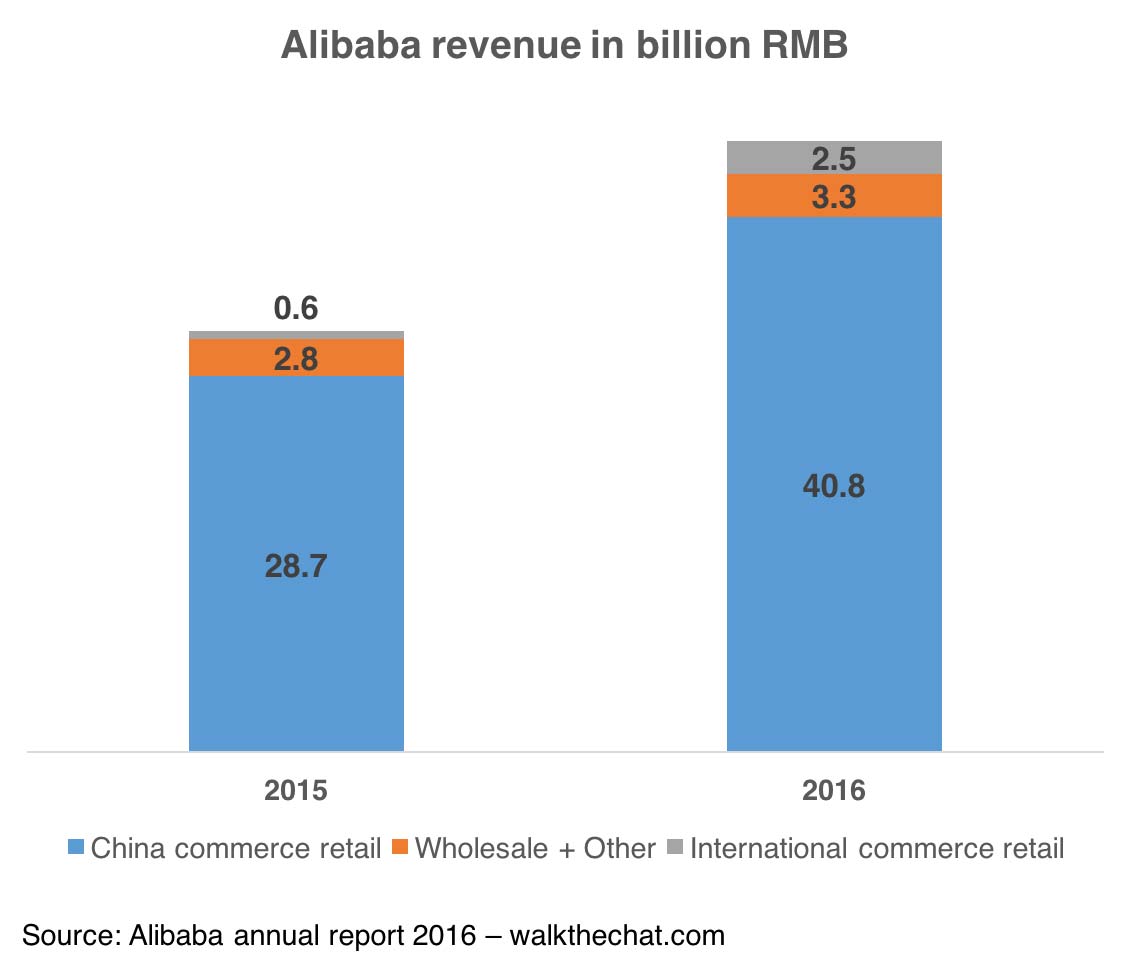
Although it’s still a very small proportion of Alibaba’s total revenue, international commerce jumped in a single year from 1.9% to 5.4% of Alibaba’s total business.
The study of the Google Index of Amazon and AliExpress in Indonesia (the largest economy of South East Asia) shows a steady growth of AliExpress, catching up with a declining Amazon.
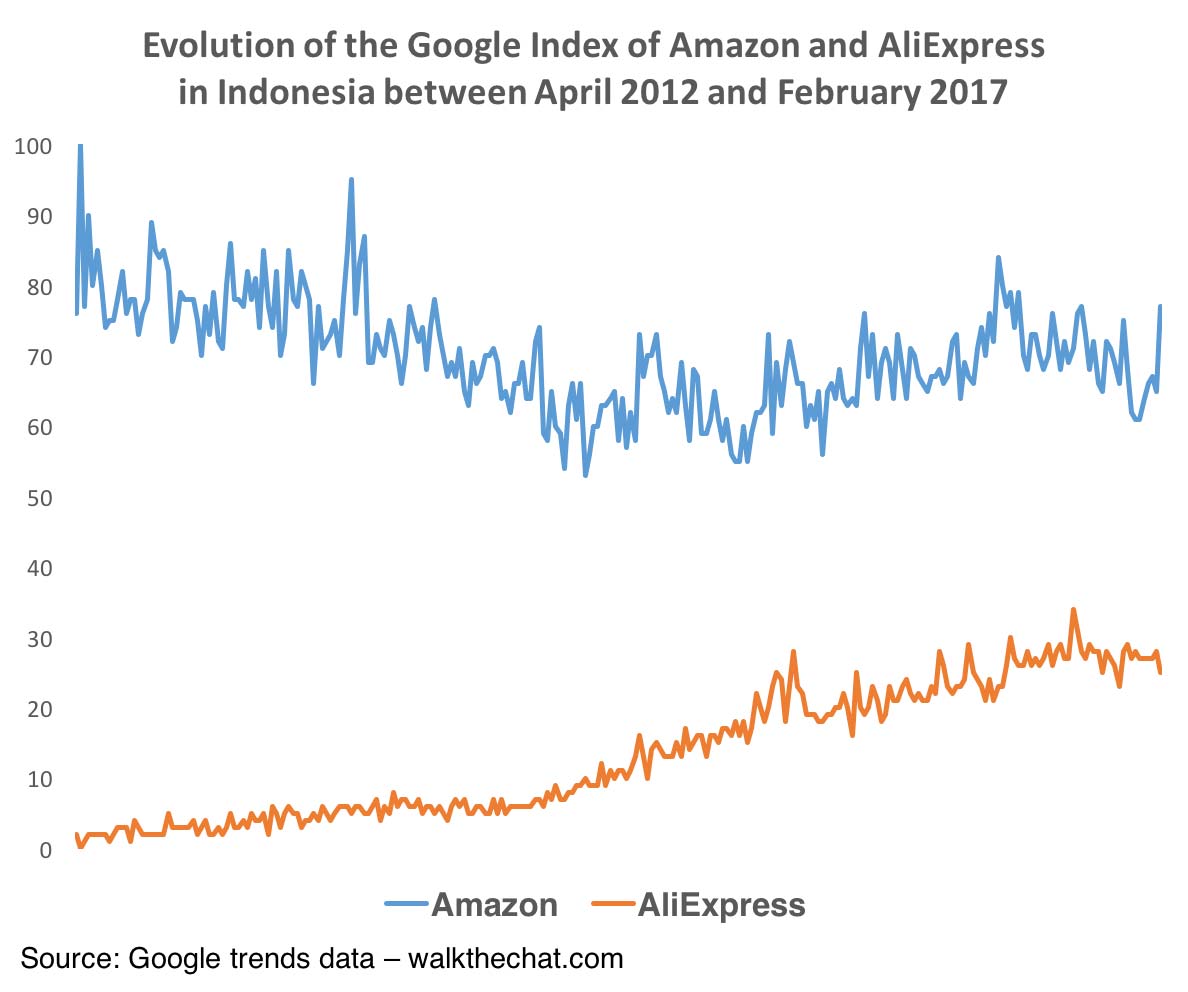
But things look much bleaker for Amazon once we start to include in the equation the latest acquisition of Alibaba in South East Asia (Alibaba bought a controlling stake in Lazada in April 2016 for 1 billion US$), the e-commerce platform backed by Rocket Internet: Lazada.
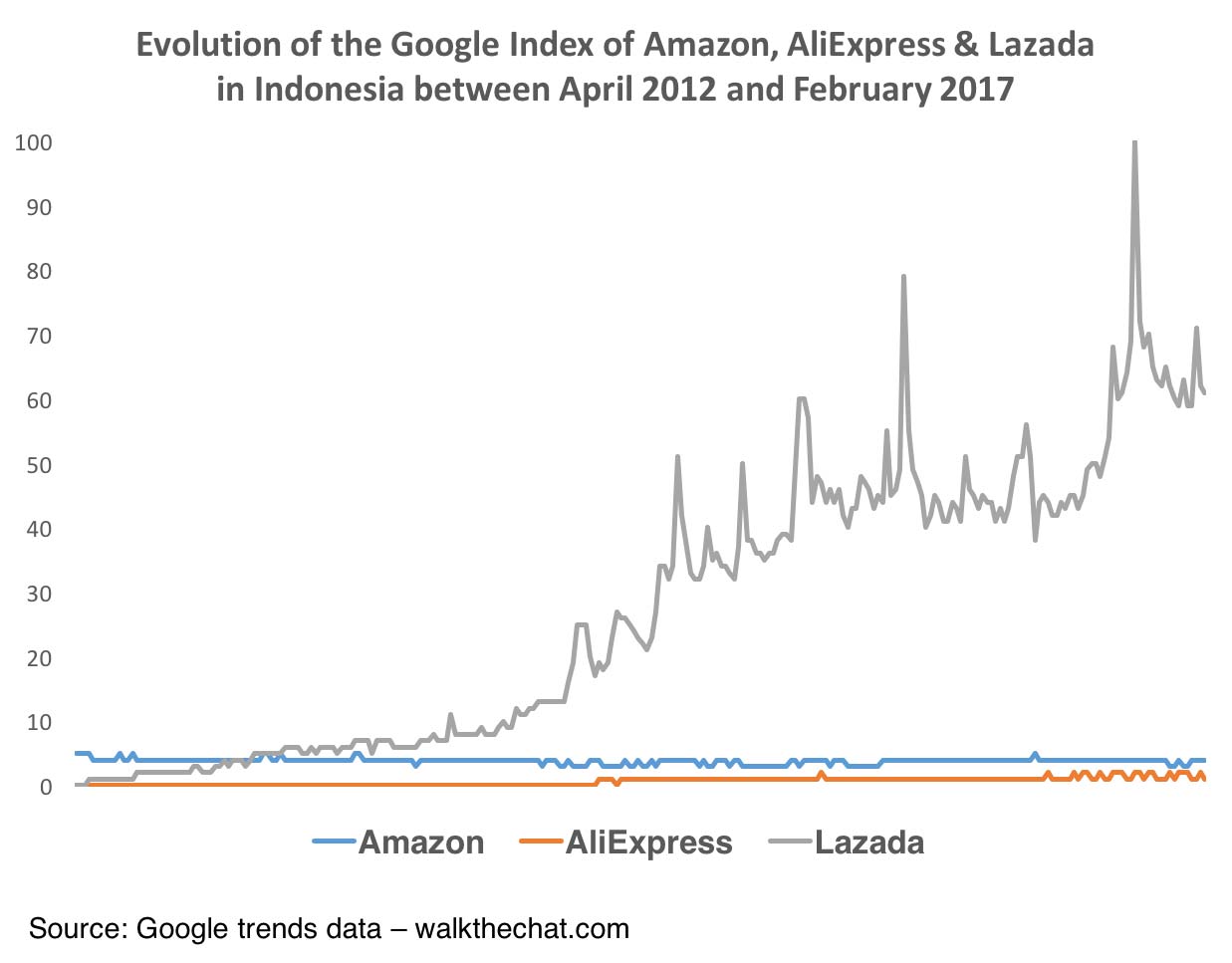
Other countries of South East Asia (Thailand, Malaysia, etc.) show a similar pattern: AliExpress is growing, and Lazada is destroying Amazon.
The bold acquisition of Lazada
The main contributor to the impressive growth of Alibaba outside China is arguably the acquisition of Lazada.
Lazada is dominating the e-commerce space in South East Asia (a region with a cumulative number of 600 million potential customers). It is however doing so at the expense of massive loss: the company recorded a loss of $334 million in 2015, twice more than in 2014.
Alibaba can afford to lose money on strategic investments, but the Lazada acquisition remains a bold move for the Chinese e-commerce leader.
An e-commerce hub in Malaysia
End of March, Alibaba announced the development of a e-hub together with the Malaysia Digital Economy Corporation (MDEC).
What’s an e-hub? It’s a combination of offline solutions (a logistics hub situated in close proximity to Kuala Lumpur International Airport), software support (for better coordination between Chinese and Malaysian vendors) and support for payments, talent recruitment and administrative processes between China and Malaysia.
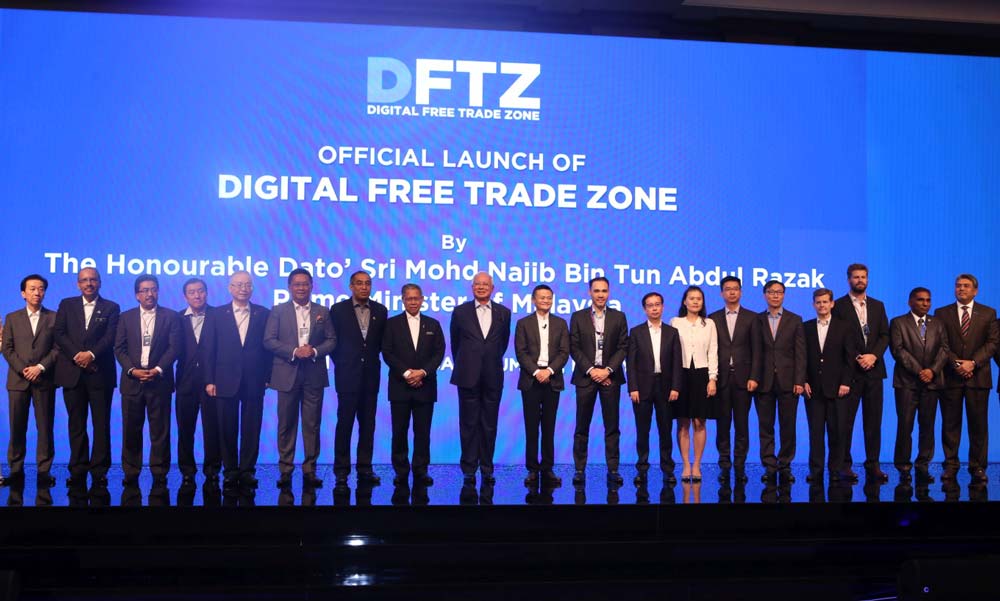 This collaboration shows the clear commitment of Alibaba to establish a very real presence in South East Asia
This collaboration shows the clear commitment of Alibaba to establish a very real presence in South East Asia
Launch of “Taobao collection” on Lazada Singapore
Another interesting move: Alibaba is launching “Taobao Collection”, a selection of 400,000 listings from Taobao that will now be sold on Lazada in Singapore.
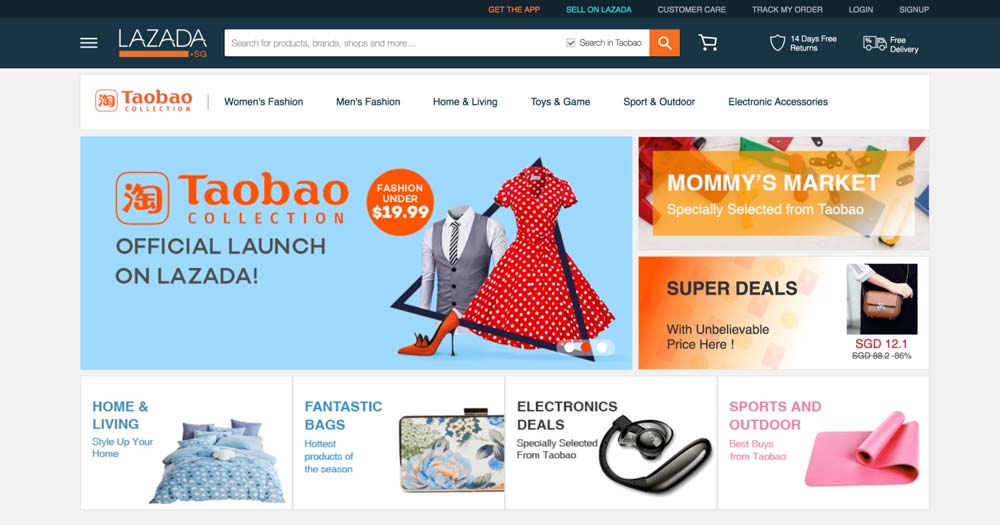
Chinese sellers have long been plagued by issues with translation, communication and returns when selling outside China.
With Taobao Collection, Alibaba is trying to solve all of these problems by helping Taobao sellers localize their offer with Singapore, and then offering the products through the familiar platform of Lazada.
Why is Alibaba so successful in South East Asia
There are a few things that explain Alibaba’s success in South East Asia:
#1 South East Asia is facing the same challenges today that China was facing 10 years ago:
China’s economy has been growing faster than the rest of Asia, and has therefore figured out a lot of the logistics / payments issues which still need to be addressed in South East Asia
#2 South East Asia is a fragmented market:
While it may be difficult for Alibaba to enter the US due to Amazon’s domination, South East Asia is a very fragmented e-commerce market. Alibaba now controls a significant slice of this market with the Lazada acquisition.
#3 Network effects are weaker in e-commerce:
It is tough for WeChat to compete against Facebook due to network effects: users only want to use social networks where their friends are using already. E-commerce doesn’t have such issues. You can be the first of your friends to purchase from a website, and it won’t affect your experience of it. E-commerce just needs merchants to purchase from, and Alibaba already has plenty of these.
Conclusion
Both Tencent and Alibaba are doing their best to pick the low-hanging fruits in their international expansion. Tencent is trying to help foreign firms target Chinese tourists. And Alibaba is targeting South East Asia as its first wave of consumer facing (B2C) international expansion. Both of these strategies make perfect sense.
We will soon see the rise of the first wave of truly international Chinese IT giants.

